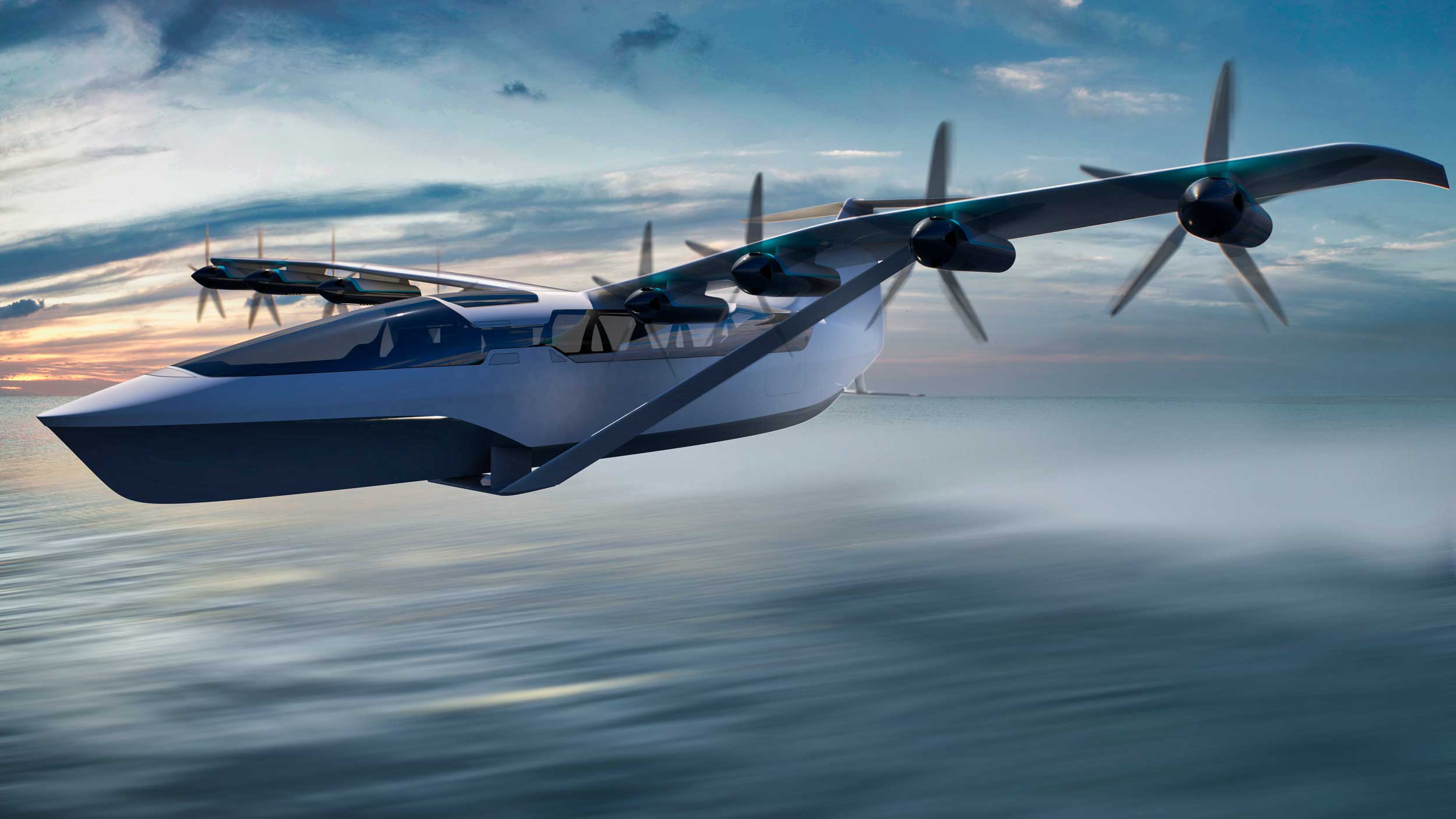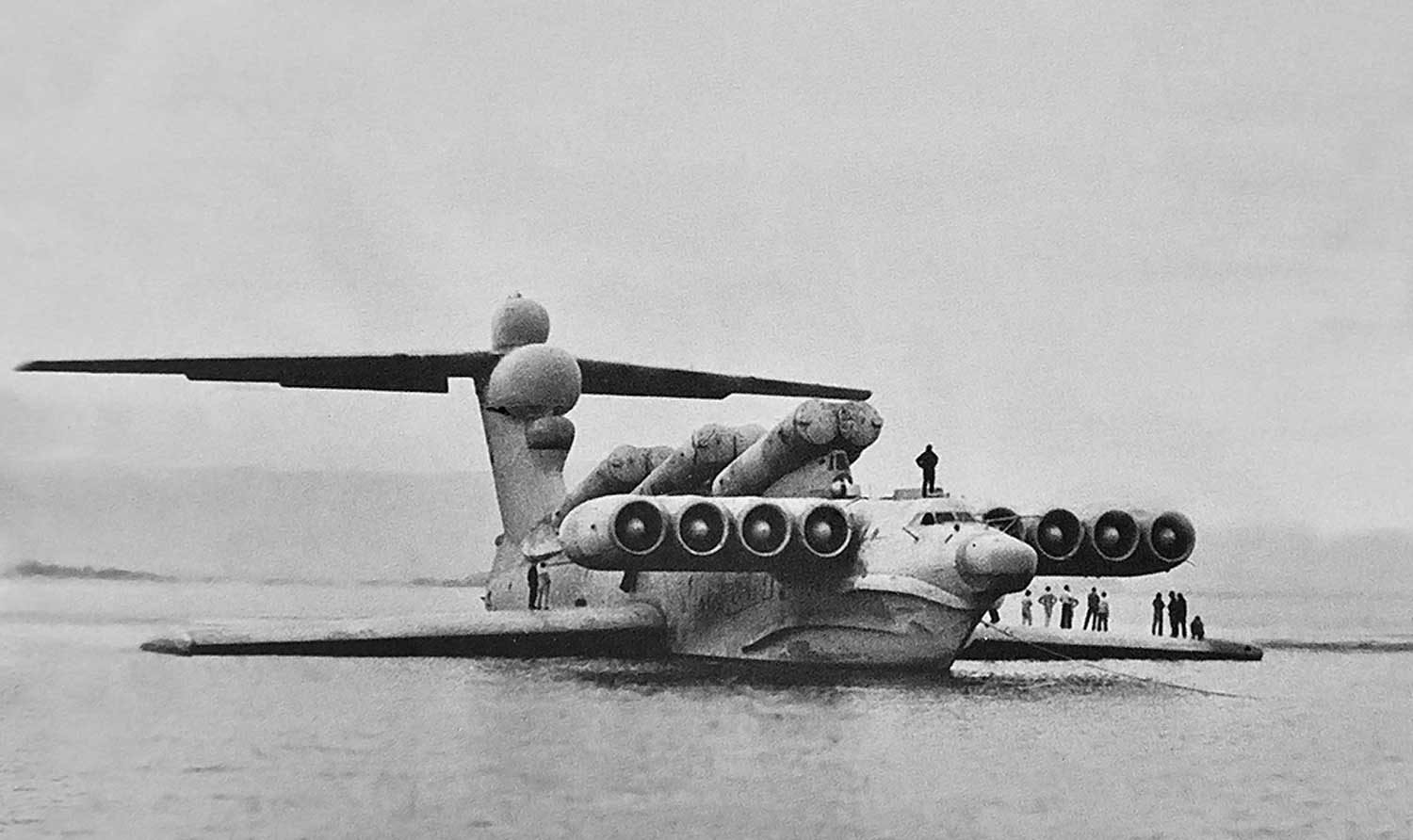Money doesn’t seem to be an issue when developing new generation electric aircraft. The Regent Seaglider has not only raised capital from some high-profile investors but also has provisional orders totalling more than $450m – and the aircraft hasn’t even been constructed let alone flown.
Regent’s electric Seaglider is planned to fly along coastal routes and operated by airlines, ferry companies and governments.
The Seaglider has two operating modes. First, as it leaves crowded city harbours it will operate at low speeds (20-45mph) on a hydrofoil.
Then, once it reaches open water, the Seaglider accelerates, takes off and cruises at speeds up to 180mph staying within one wingspan’s height of the water’s surface. It’s flying in ‘ground effect’ where there’s a cushion of pressurised air between the wings and the water.
https://youtu.be/FaJL75oCtvE
It’s not a new concept. The most famous previous example is the Russian Lun Ekranoplan, nicknamed the ‘Caspian Sea Monster’. Monster it was, with a 242ft wingspan and eight turbofan engines mounted on forward canards. It wasn’t a huge success being in use for just three years.
However, Regent’s Seaglider is much more modest in size and complexity and makes use of modern electronics to manage safe flight at low altitudes utilising a multiple-redundant, state-of-the-art navigation and control system.
In theory it’s a very efficient method of travel. The aircraft doesn’t use lots of energy climbing to altitude, doesn’t have to go into time and energy wasting holds when approaching its destination. And it’s always within a few feet of a safe landing. The range is claimed to be 180 miles.

Regent’s most recent financing round was led by Founders Fund, with participation from Dallas Mavericks’ owner and technology investor Mark Cuban, Y Combinator, Caffeinated Capital, Thiel Capital, Relativity Space founder Jordan Noone, and Fitbit founder James Park.
Mr Cuban, who was the first investor in billion-dollar rocket manufacturer Relativity Space, said, “The efficiency of coastal transportation will be 100x greater with Regent. There is no other way to describe it.
“The idea of having to get between two coastal points is always stress inducing. Regent changes all that and makes it fast and easy. Passengers will spend less time in transit and more time with their families.”
Regent says it has received $465m in provisional orders from some of the world’s largest airlines and ferry companies. Aircraft operators are excited because seagliders are half the operating cost of aircraft, and ferry operators are excited because the seagliders are six times faster.
The founders of Regent, Billy Thalheimer and Mike Klinker, worked together while both studying aerospace engineering at MIT as well as time at Aurora Flight Sciences and Boeing. Billy brings his experience leading strategy and execution across future mobility verticals including test flight, future product design, and component development as CEO. Mike has built and written control software for over a dozen aircraft, and brings his advanced flight controls and abundant flight test experience as CTO.

